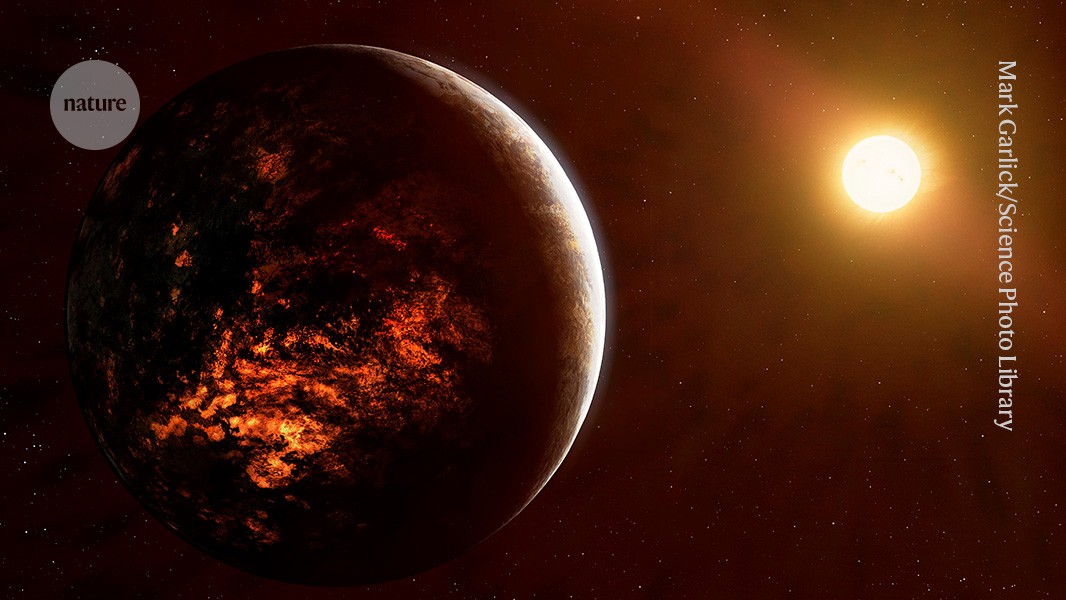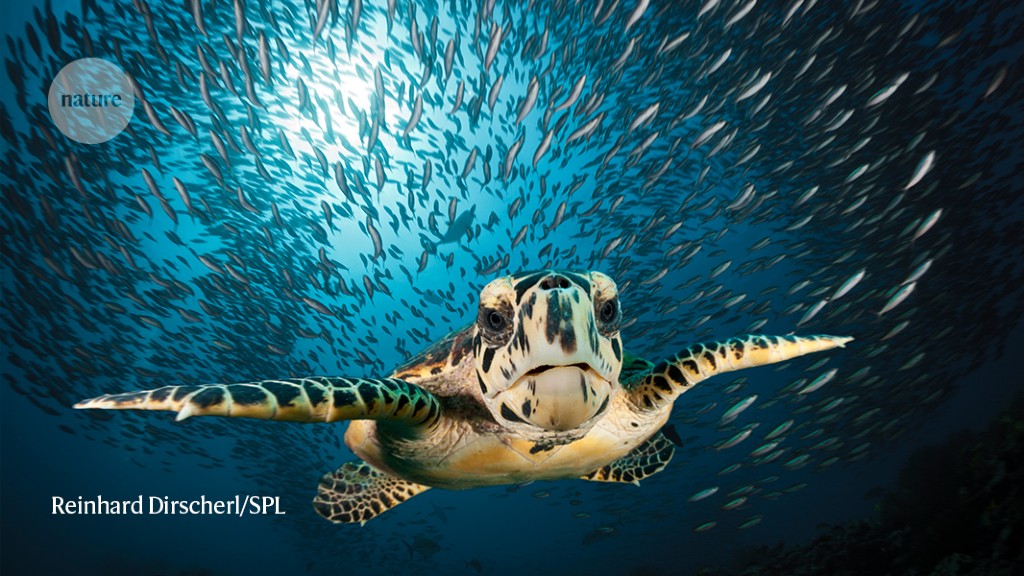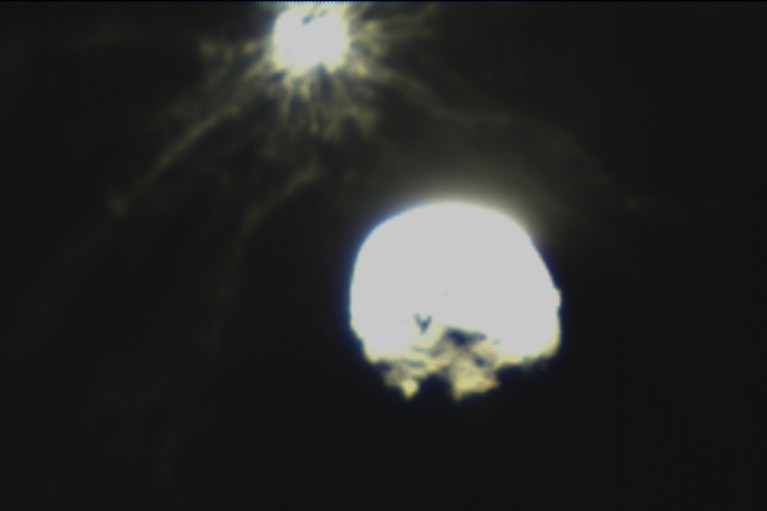As the Italian probe LICIACube whizzed past asteroids Didymos (bottom) and Dimorphos (top), it captured a debris plume spraying out from the DART spacecraft as it smashed into Dimorphos.Credit: ASI/NASA
Astronomers see fireworks as spacecraft ploughs into asteroid
Telescopes in space and across Earth captured the spectacular aftermath of NASA’s Double Asteroid Redirection Test (DART) spacecraft crashing into the asteroid Dimorphos on 26 September.
The goal was to knock the harmless space rock into a slightly different orbit to test whether humanity could do such a thing if a dangerous asteroid were ever detected heading for Earth. The smash-up was “the first human experiment to deflect a celestial body”, says Thomas Zurbuchen, NASA’s associate administrator for science, and “an enormous success”.
A ringside view came from LICIACube, a tiny Italian spacecraft that flew along with DART and photographed the impact, which took place 11 million kilometres from Earth. LICIACube’s first images, released by the Italian Space Agency on 27 September, show a large fireworks-like plume of rocks and other debris coming off Dimorphos (pictured, top) after DART had ploughed into it.
It will take days to weeks before mission scientists can confirm whether the test worked, and did in fact cut the time it takes Dimorphos to orbit its partner asteroid, Didymos (pictured, bottom), by 10–15 minutes.
The shell of the endangered hawksbill sea turtle (pictured) is prized for trinkets and jewellery.Credit: Reinhard Dirscherl/SPL
Sea turtles swim more freely as poaching declines
Poaching is less of a threat to the survival of sea turtles than it once was, an analysis suggests (J. F. Senko et al. Glob. Change Biol. https://doi.org/gqrzzn; 2022). Illegal sea-turtle catch has dropped sharply since 2000, and most current exploitation occurs in areas with relatively healthy turtle populations.
The analysis is the first worldwide estimate of the number of adult sea turtles that are moved on the black market. The authors surveyed sea-turtle specialists and sifted through documents to derive an estimate that around 1.1 million sea turtles were illegally harvested between 1990 and 2020. Nearly 90% of them were funnelled into China and Japan. Of the species that could be identified, the critically endangered hawksbill turtle (Eretmochelys imbricata; pictured), prized for its beautiful shell, was among the most frequently exploited.
But the team also found that the illegal catch from 2010 to 2020 was nearly 30% lower than in the previous decade. “The silver lining is that, despite the seemingly large illegal take, exploitation is not having a negative impact on sea-turtle populations on a global scale,” says co-author Jesse Senko, a marine-conservation scientist at Arizona State University in Tempe.









More News
This Earth-like exoplanet is the first confirmed to have an atmosphere
Retuning of hippocampal representations during sleep – Nature
Measurement of the superfluid fraction of a supersolid by Josephson effect – Nature